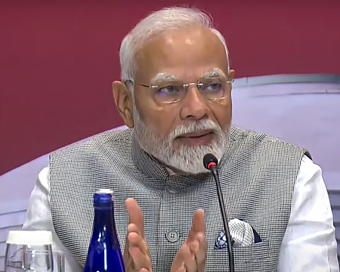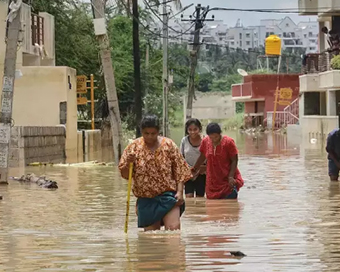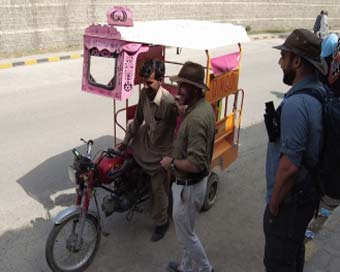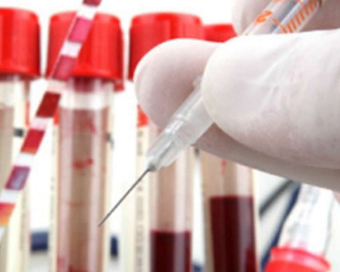 PM Modi visit USA
PM Modi visit USA Only the mirror in my washroom and phone gallery see the crazy me : Sara Khan
Only the mirror in my washroom and phone gallery see the crazy me : Sara Khan Karnataka rain fury: Photos of flooded streets, uprooted trees
Karnataka rain fury: Photos of flooded streets, uprooted trees Cannes 2022: Deepika Padukone stuns at the French Riviera in Sabyasachi outfit
Cannes 2022: Deepika Padukone stuns at the French Riviera in Sabyasachi outfit Ranbir Kapoor And Alia Bhatt's Wedding Pics - Sealed With A Kiss
Ranbir Kapoor And Alia Bhatt's Wedding Pics - Sealed With A Kiss Oscars 2022: Every Academy Award Winner
Oscars 2022: Every Academy Award Winner Shane Warne (1969-2022): Australian cricket legend's life in pictures
Shane Warne (1969-2022): Australian cricket legend's life in pictures Photos: What Russia's invasion of Ukraine looks like on the ground
Photos: What Russia's invasion of Ukraine looks like on the ground Lata Mangeshkar (1929-2022): A pictorial tribute to the 'Nightingale of India'
Lata Mangeshkar (1929-2022): A pictorial tribute to the 'Nightingale of India' PM Modi unveils 216-feet tall Statue of Equality in Hyderabad (PHOTOS)
PM Modi unveils 216-feet tall Statue of Equality in Hyderabad (PHOTOS)The Badminton Association of India (BAI) has announced a 14-member-strong India squad for
- Men’s Sr Hockey Nationals to be played in division-based format from April 4
- Mensik denies Djokovic 100th title in Miami final
- KIPG: Son of a vegetable vendor, Bihar’s Jhandu Kumar eyes Worlds, 2028 Paralympics
- Hardik Singh credits hard work and team unity for receiving HI Midfielder of the Year award
- Djokovic, Alcaraz land in same half of Miami draw
India to launch standby navigation satellite Last Updated : 30 Jan 2017 03:53:20 PM IST 
(File Photo)
India will launch one of its back up navigation satellites this year as a replacement to IRNSS-1A satellite, whose three atomic clocks have failed, an official of the Indian space agency said on Monday.
The official denied the existence of similar problems with the rubidium atomic clocks in another navigation satellite.
"The atomic clocks have failed in only one satellite. We will be launching the stand-by satellite this year. All other six satellites are operational and are providing the navigation data," A.S. Kiran Kumar, Chairman, Indian Space Research Organisation (ISRO), told IANS.
He said the atomic clocks were imported and ISRO would take up the issue with the foreign supplier.
Each satellite has three clocks and a total of 27 clocks for the navigation satellite system were supplied by the same vendor.
The clocks are important to provide precise data.
Simply put, the Indian Regional Navigation Satellite System (IRNSS) is similar to the GPS (Global Positioning System) of the US, Glonass of Russia and Galileo of Europe as well as China's Beidou.
While GPS and Glonass are fully functional global systems, the Chinese and the Japanese systems offer regional coverage and Europe's Galileo is yet to be operational.
According to Indian space agency, the applications of IRNSS are: terrestrial, aerial and marine navigation, vehicle tracking and fleet management, terrestrial navigation for hikers and travellers, disaster management, integration with mobile phones, mapping and geodetic data capture and visual and voice navigation for drivers.
In other words, IRNSS could be said to be the "Indian GPS".
Apart from the civilian applications, the IRNSS will be used for defence purposes as well.
Kumar said ISRO was studying the problem, when queried whether the issue was with the electronic side of the clocks.
The Rs 1,420 crore Indian satellite navigation system NavIC consists of seven satellites in orbit and two as substitutes.
Starting in July 2013, the Indian space agency has launched all the seven navigation satellites. The last one was launched on April 28, 2016. Each satellite has a life span of 10 years.
It is learnt that the NavIC satellites were performing well till the three clocks in IRNSS-1A -- the first satellite -- failed.
According to Kumar, all the hardware are susceptible to failure even though elaborate testing is done.
Industry officials told IANS navigation satellites of other countries too have faced atomic clock problems.IANS For Latest Updates Please-
Join us on
Follow us on








172.31.16.186







